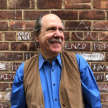Review of 'The Orville' 2.11
Time Capsule, Space Station, and Harmony

A real diamond of an episode—2.11—of The Orville last night, right up there with the best time travel stories of Star Trek: TOS and TNG.
Well, it's not actually time-travel, it's a time capsule that serves as the backbone of this emotionally powerful story, that plus the simulator, as Gordon falls in love with Laura, who has put her phone in a time capsule back in 2015. Gordon figures out that he can use all of Laura's messages and images to create a facsimile of her life back then, which he can enter via what Star Trek: TNG called the holodeck.
Before the episode concludes, she sings and Gordon joins her in harmony—was he really singing or was that a simulation, too? Doesn't matter, because, as Gordon explains to his friends/colleagues on The Orville, ultimately or at least in a very real way, they're the same. Some of the greatest philosophers in history, from Plato to Berkeley, would have agreed.
One little error in the 2015 retrospective, which I'm surprised slipped through continuity or whatever the name of that job in the production team. In their first conversation, Gordon tells Laura that his father makes space stations, and she has no idea what that is. Really? In 2015, I bet just about everyone in the United States and even the world who was over 10 years old knew what a space station was.
But that's a minor glitch in what nonetheless was a masterpiece, on a par in its own way with "City on the Edge of Forever" and "The Inner Light." Even the humor was top-notch, with Bortus and his mate struggling to break free of their tobacco habit (yeah, the time capsule had a cigarette or two).
In more ways than one, The Orville is really smokin'. See you back here in three weeks.

first starship to Alpha Centauri - with just enough fuel to get there ...
About the Creator
Paul Levinson
Novels The Silk Code & The Plot To Save Socrates; LPs Twice Upon A Rhyme & Welcome Up; nonfiction The Soft Edge & Digital McLuhan, translated into 15 languages. Best-known short story: The Chronology Protection Case; Prof, Fordham Univ.






Comments
There are no comments for this story
Be the first to respond and start the conversation.